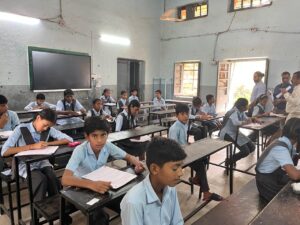
At the heart of the Tools Competition is a commitment to learning engineering—the practice of designing tools that don’t just serve learners today, but also generate insights and resources that can accelerate progress across the field. Tools grounded in learning engineering not only serve learners but also generate insights that deepen our collective understanding of how people learn.
One of the most powerful ways competitors can do this is by creating public assets—datasets, models, or frameworks that other researchers and developers can use to drive innovation. The 2025 Tools Competition featured a Datasets Prize to support the release of high-quality, open datasets that reflect a diversity of learners and learning contexts. Learn more about the three winning teams here.
Why Public Assets Matter
While engineers have access to some educational datasets (e.g., student-level assessment data), more robust and higher-quality datasets are needed to address challenges such as privacy, bias, and equity in AI for education.
When competitors generate public assets, the impact of their work extends far beyond a single tool or classroom. Public assets:
- Advance equity by ensuring AI models and tools can be tested and improved for diverse student populations.
- Fuel research and development by providing a shared foundation for new discoveries.
- Spark innovation by allowing others to build on your work in ways that may go beyond your original vision.
This makes public assets valuable not only in the context of the competition but also for the long-term growth of the learning engineering community.
What Counts as a Public Asset?
Public assets may include:
- Datasets for training or evaluating AI models, ideally provided in an ‘AI-ready’ format, meaning their size, structure, and features have already been developed and formatted for effective modeling.
- Open-source AI models, where users have free access to the underlying source code and can use or modify the code (e.g., fine-tune the models) with other custom datasets or for other uses.
- Other open-source frameworks and tools to streamline the process for building AI models (e.g., plug-ins or software packages for data preprocessing, model training, model inference, or model evaluation).
The Power of Benchmark Datasets
Among public assets, benchmark datasets are particularly transformative. Benchmark datasets support the development of tools that reliably serve diverse learners and capture a fuller picture of the learning process. These are unique compared to other datasets because of their standardized use in training and evaluating AI models. A benchmark dataset can help assess machine performance as the basis for comparison with other models.
Benchmark datasets:
- Include high-quality data. Quality may refer to the completeness and structure of the data, the sampling method, representation, the way the dataset addresses issues of bias and fairness, and other markers.
- Have the potential to lead to a quality or generalizable algorithm. The robustness and quality of the data can train or evaluate an algorithm with strong potential for impact and reach.
Three areas hold especially high potential for future benchmark datasets:
- Expanded datasets with more metadata. Among existing datasets, there is a lack of substantial metadata providing additional context on students, teachers, and the classroom.
Without rich metadata, models often perform well for the “average” learner but risk excluding marginalized or special populations. Expanded datasets enable customization of AI models to ensure they serve diverse student populations and evaluate fairness and bias. Examples of metadata may include elements such as grade level, English-language learner status, race/ethnicity, special needs/IEP status, and others. - Multimodal datasets. Multimodal datasets combine multiple data types, such as text, images, audio, video, and/or others, to offer a more comprehensive view of student learning. They could help predict learning trajectories more accurately. This potential, however, remains underexplored in public education, likely due to the lack of consensus on how to best maintain student privacy.
An example of a tool that captures multimodal data could be an AI reading tutor that records students’ audio during reading exercises, videos their interactions with peers, and tracks their reading performance over time. - Multi-benchmark suites and live updates. Benchmark datasets can benefit from being periodically refreshed to avoid data contamination, which occurs when training data overlaps with test data, leading to inflated performance. This is similar to a student acing a test because they saw the questions in advance. Regular updates also help prevent benchmark saturation, where models become so good at a fixed benchmark that it no longer provides useful information. Multi-benchmark suites, which test models against several evolving datasets, can further mitigate these risks.
Why This Matters for Competitors
The Tools Competition is about more than supporting individual innovations—it’s about building the shared infrastructure that allows learning science and ed tech to advance together. By contributing public assets, competitors help ensure that progress in learning engineering is reliable, equitable, and lasting.
If your tool could create public assets, highlight this in your proposal. Even if public assets aren’t your main focus, showing how your work could benefit the broader field strengthens your proposal and amplifies its long-term impact.
The Tools Competition launches annually each Fall and seeks to accelerate breakthrough innovations in education, backing evidence-driven technologies that generate research insights and deliver real-world impact for learners worldwide.



